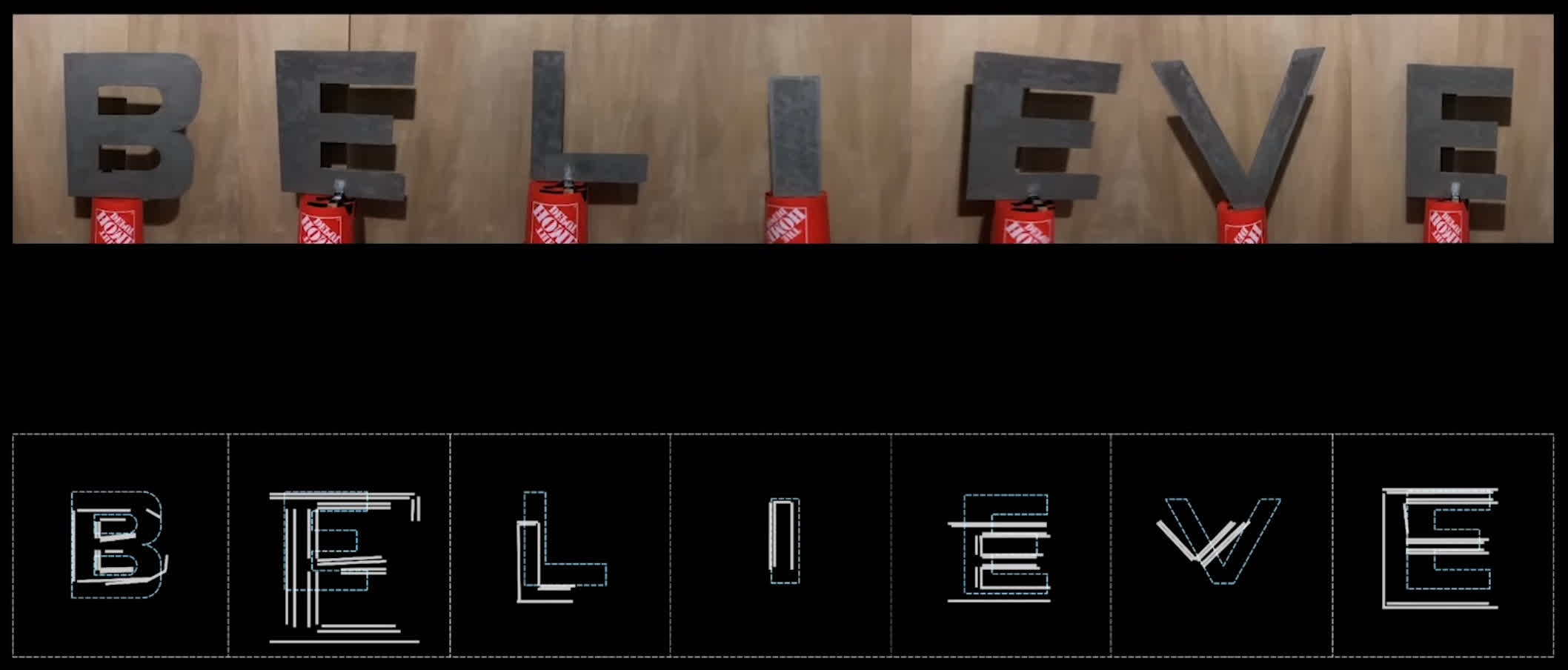Through the looking glass: Researchers have been exploring the concept of using Wi-Fi to "see" through walls for a considerable amount of time. A recent study is now suggesting an alternative method to address this challenge, one that appears capable of generating an approximation of the English alphabet using readily available commercial Wi-Fi devices.

Researchers at the University of California, Santa Barbara, have developed a novel method for imaging objects beyond the line of sight, which they've named "Wiffract." This technique leverages the interaction of Wi-Fi radio-frequency (RF) signals with the edges of objects that need to be imaged, guided by the principles of geometrical diffraction theory (GTD). With the appropriate mathematical model, Wiffract can produce remarkable outcomes, such as "reading" shapes and letters through walls.
The researchers explain that when an RF wave encounters an edge point, it generates a cone of outgoing rays known as a "Keller cone" in accordance with GTD. Wiffract's mathematical model can capture the edges of stationary objects by utilizing GTD theory and the corresponding Keller cones. Once it identifies "high-confidence edge points," Wiffract can reconstruct the shapes of objects while enhancing the resulting edge map further through advanced computer vision techniques.
According to the researchers, Wiffract has been proven effective in various experiments, including what they consider to be the first demonstration of Wi-Fi reading the English alphabet through walls. Key features of this new method include its capacity to utilize radio waves from off-the-shelf Wi-Fi transceivers for imaging and the fact that it eliminates the need to train a machine learning algorithm for RF sensing.
Thanks to the ubiquity of Wi-Fi and other wireless signals, the team explains, there is now a "considerable interest" in utilizing radio signals for various applications, including sensing and "learning about the environment." Previous imaging methods relied on motion for "activity recognition" or person identification, while imaging the details of stationary objects remained a considerably challenging problem.
Wiffract offers a solution to this problem, as it can effectively image stationary objects through Wi-Fi, which could be valuable for "scene understanding and context inference in general." The researchers propose several potential applications for this emerging technology, including smart homes, "smart spaces," structural health monitoring, search and rescue operations, surveillance, excavation domains, and more.
The UC Santa Barbara team is avoiding any discussion about the privacy implications of Wiffract. A technology that can read through walls could raise serious security concerns, potentially providing cyber-criminals a new tool to compromise home privacy from a distance. Law enforcement agencies might also potentially use this technique, hopefully for legitimate purposes.
https://www.techspot.com/news/100151-wiffract-wi-fi-method-can-read-letters-through.html